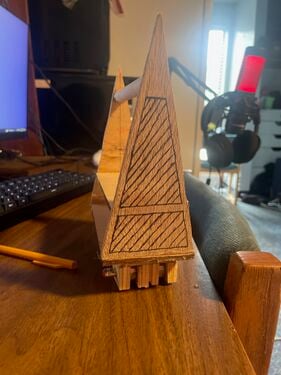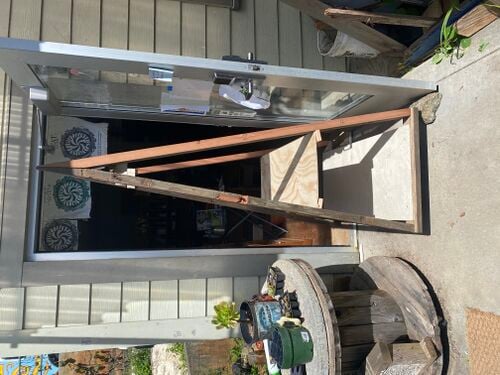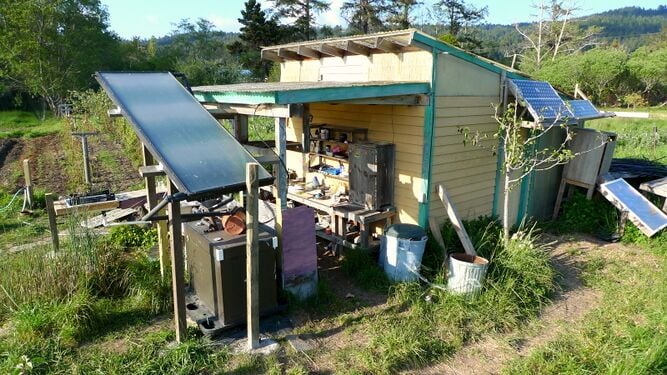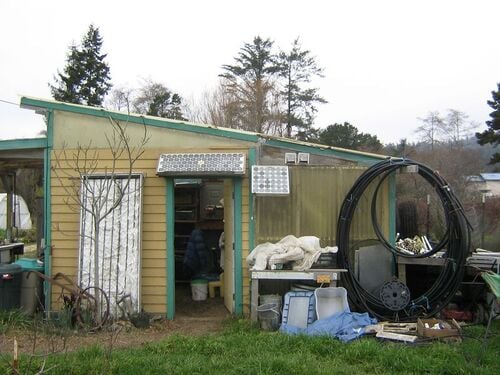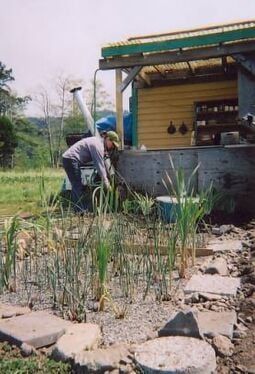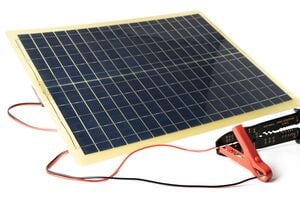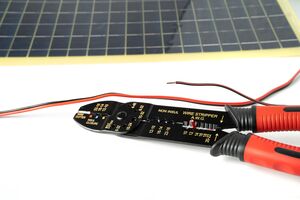
This paragraph will appear in search results and previews for this page. Write a brief introductory text with information such as a description of your project, when was it designed and built, your motivation to solve the problem, the intended users. This will explain your project to someone who has never heard of it before.
Background[edit | edit source]
The client for this project is The Campus Center for Appropriate Technology, CCAT, which has a clothing rack they use to facilitate clothing swaps. It is stored inside and must be moved into a more visible area outside for when the clothing swap is running. However, it is difficult to move, unattractive, and worn out.
The project is being facilitated by an ENGR 205 group called Los Vatos Verde for the spring semester of 2024 at Cal Poly Humboldt.
Problem statement[edit | edit source]
The objective is to design, build, and test a clothing rack for CCAT. CCAT will use this clothing rack to help facilitate a clothing swap which will allow CCAT to give clothes a second life and give students access to free clothing.
Criteria[edit | edit source]
Include a brief intro to the criteria and then include a table with constraints and weights (0-10 highest).
| Criteria | Description | Weight (1-10) |
|---|---|---|
| Portability | Adequate size, weight, and disassembly to ease transportation | 10 |
| Durability | Sturdiness, resistance to wear and tear from frequent transportation | 9 |
| Longevity | Capable of withstanding frequent use and maintaining structural integrity over time, built with materials and construction techniques that ensure a long lifespan | 7 |
| Cost | Total cost limited to $500 ($200 from CCAT, $75 from each group member) | 6 |
| Sustainability | Use of recycled/reclaimed materials, eco-friendly manufacturing processes | 10 |
| Aesthetics | Visually appealing/interesting, clean finishes, better-looking than previous model | 9 |
| Storage | Space-efficient design, ability to accommodate clothing and possibly shoes | 7 |
Prototyping[edit | edit source]
The initial drawing shows our initial sketch of the prototype we named the Eiffel Tower. Many of the design elements remained through the process, and made their way into the final design.
The first prototype was all about exploring the aesthetics and overall design of the clothing rack. To achieve this, the team created a small-scale model using scrap wood as the main material with the addition of cardboard cutouts for accessory placement. These cutouts allowed the client to experiment with different arrangements and placements on the prototype which facilitated decision-making regarding the final design.
For Prototype #2 the team constructed a full-scale model using scrap wood sourced from CCAT and the Cal Poly Humboldt makerspace. The primary objective of this prototype was to assess the dimensions of the clothing rack, taking into account the constraints posed by the door through which CCAT would need to maneuver the rack for their clothing swap events. Prototype #2 not only served to test the dimensions required for door clearance at CCAT but also provided invaluable insights into the logistics of building and structuring the clothing rack.
- Sample gallery
-
The first prototype for CCAT clothing rack.
-
The second prototype for CCAT clothing rack.
Final product[edit | edit source]
Describe your final product here with image and labels. Start with the biggest overview first.
Construction[edit | edit source]
A very complete description of how the final project is built. This large section should have lots of pictures. Use the Help:Images#Galleries and probably Template:Steps (e.g. Barrel O' Fun Worm Bin Instructions).
- Sample gallery
-
Sample caption text.
-
More sample caption text. This would look better with different images.:)
-
Even more sample caption text.
Video instructions[edit | edit source]
A good way to display a process is by making a video explaining your process. See Template:Video for information on how to add and annotate videos.
Bill of materials[edit | edit source]
Description of costs, donations, the fact that this is just proposed, etc. For a simple cost table, see Help:Table examples#Cost Table and Template:Bill of materials for two nice formats.
| Item | Amount | Cost per unit | Total |
|---|---|---|---|
| 2x4x10 | 2 | USD 5.30 | USD 10.60 |
| 4x8 Plywood | 1 | USD 41.44 | USD 41.44 |
| Closet Rod | 1 | USD 6.45 | USD 6.45 |
| 1-1/4in Screws | 1 | USD 8.49 | USD 8.49 |
| 2-1/2in Screws | 1 | USD 8.49 | USD 8.49 |
| Clear Lacquer | 1 | USD 18.99 | USD 18.99 |
| Chesnut Stain | 1 | USD 13.99 | USD 13.99 |
| Hooks | 2 | USD 4.29 | USD 8.58 |
| Swivel Caster Wheels | 4 | USD 8.99 | USD 35.96 |
| Paint Brush | 1 | USD 2.60 | USD 2.60 |
| Grand total | USD 155.59EUR 133.81 <br />GBP 113.58 <br />CAD 192.93 <br />MXN 3,244.05 <br />INR 11,645.91 <br /> | ||
Operation[edit | edit source]
This is how to operate. It should have a brief introduction. You might want to show images or videos with step-by-step instructions when needed.
Maintenance[edit | edit source]
In the maintenance section we will go over
- Are there any needed actions for maintenance?
- How often?
- Who should perform maintenance?
Maintenance schedule[edit | edit source]
This is when to maintain what.
- Weekly
- Wipe down the clothing rack with a non-toxic cleaning solution rag
- Yearly
- Check if the visible screws are all tight
- Every 5 years
- refinish the worn parts of the clothing rack
Conclusion[edit | edit source]
Testing results[edit | edit source]
Describe the testing results.
Discussion[edit | edit source]
Discuss the testing results.
Lessons learned[edit | edit source]
Discuss lessons were learned during this project and what you would do different next time.
Next steps[edit | edit source]
Discuss any next steps for the project as it goes on into the future.
Troubleshooting[edit | edit source]
| Problem | Suggestion |
|---|---|
| Loose hanger | Carefully use screw driver to tighten screws |
| Stuck wheel | Make sure to unlock all the wheels, and potentially clean and lubricate the bearings in the wheel |
Team[edit | edit source]
Introduce team and semester in the following format:
- Lonny Grafman
- Emilio Velis
- Ariana Robinson
- Anya Breitbard
- Jesus Rivera
- Shaun Masuda
References[edit | edit source]
